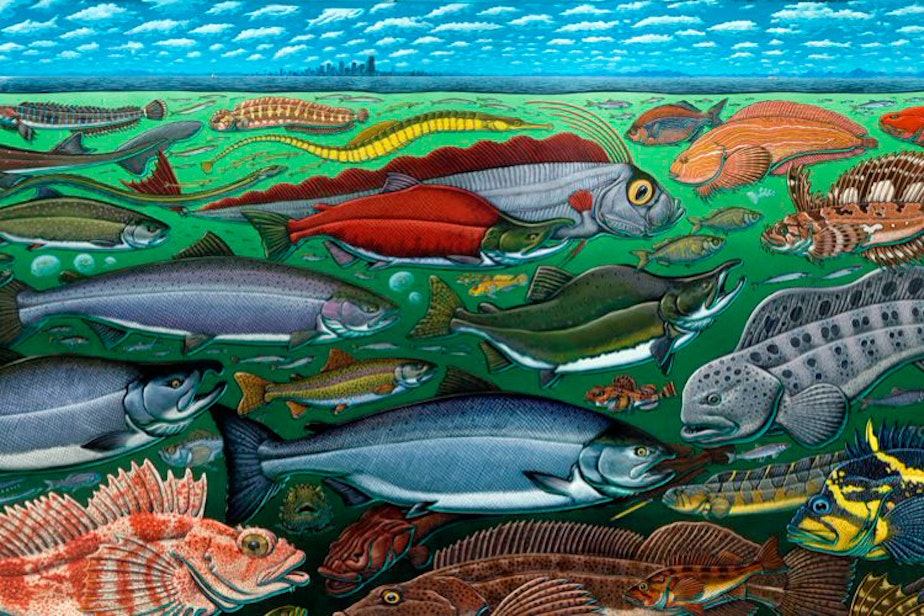Leave the imported shrimp, take the local bivalves: sustainable seafood choices

Seafood and the Pacific Northwest go hand in hand. Maybe you're one of those people out fishing, clamming, and crabbing during the season. But if you're more of a shopper, your options aren't all local and sustainable.
Jessica Gephart is an assistant professor at the University of Washington School of Aquatic and Fishery Sciences. She was recently quoted in a piece in The Guardian titled “Goodbye cod, hello herring: why putting a different fish on your dish will help the planet.” She told KUOW’s Kim Malcolm about her studies, and why our seafood choices matter.
This interview has been edited for clarity.
Kim Malcolm: Where does the U.S. stand now when it comes to imports and exports? And what are we eating?
Jessica Gephart: A lot of my work focuses on global trade, trying to connect it to its distant environmental impacts. We know in the U.S. that we've been consuming an increasing share of seafood from abroad. I estimate now that about two-thirds of what we consume is imported. And a lot of that is farmed. We're increasingly importing our shrimp, our Atlantic salmon, Nile tilapia, and Vietnamese catfish.
Here in the United States, our stocks are managed very sustainably. Over 90% are currently fished at a sustainable level, according to NOAA. And it's ultimately really important that we ensure that we're holding our imported seafood to those same sustainability standards, to make sure we're creating an even playing field for our domestic producers. Also, so we can provide assurances to consumers that they're able to make sustainable choices at the seafood counter.
What keys should people be aware of when it comes to choosing seafood that is sustainable?
Sponsored
When we talk about sustainability, we're often talking about a wide range of environmental concerns. We're not talking about the same environmental impact when we look at fish as when we look at beef or avocados. So, it's really important for us to start thinking more holistically about what it means for food to be sustainable.
What are the tips that you would give me as I'm trying to figure out what choices I can make that are sustainable?
I usually suggest a tiered approach. First, focus on shopping at a store where fishmongers are making sure that they are purchasing seafood from responsible producers. This allows you to not have to think about all of those complex dimensions and buy from a trusted source.
The second thing you can do is make sure that your wild-caught seafood is produced here in the US. That's a pretty easy rule of thumb since so many of our stocks are managed sustainably. Another approach is to use a consumer-facing guide like the Monterey Bay Aquarium Seafood Watch Guide, which gives ratings on how sustainable various seafood products are.
What should people know about local catch networks?
Sponsored
There has been an increase in the number of community-based seafood groups that have popped up around the U.S. A local catch network serves as a hub for these groups, and a real resource for people to connect with community-based seafood groups. This creates a tool for consumers to find local seafood harvesters that align with their sustainability values and their preferences for different species.
It's really helpful because it does a lot of that legwork for the consumer to ensure that their seafood is being harvested sustainably. They can also be a valuable resource for finding out which species are locally and seasonally available, as well as how to prepare those species that might be new to consumers.





